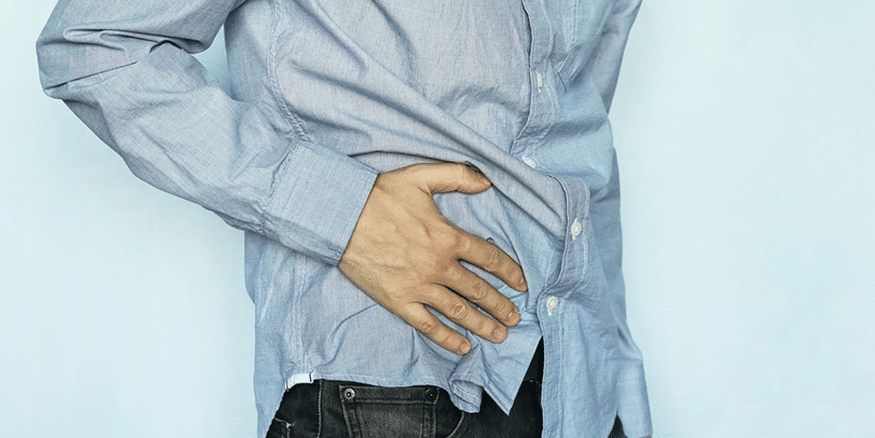
IBD and Liver Disease
Inflammatory Bowel Disease (IBD) is often associated with other diseases that develop alongside intestinal and perianal involvement. These other diseases are called extraintestinal manifestations of IBD. Extraintestinal organ systems that may be involved with IBD are listed in below. The associations of these manifestations with IBD have been recognized for many years but are not well known in terms of the mechanisms, or cellular changes that occur in the development of the disease.
Extraintestinal Organ Systems Involved with IBD
- Hepatobiliary
- Musculoskeletal
- Dermatologic
- Ocular
- Genitourinary
- Vascular and hematologic
- Cardiac
- Pulmonary
- Endocrine and Metabolic
Approximately 36% of patients who have been diagnosed with IBD have at least one associated extraintestinal manifestation. Some of the most common extraintestinal manifestations of IBD are related to active colitis and may involve the joints, the skin, the eyes, or the inside lining of the mouth. Others that are more commonly associated with small bowel dysfunction are gallstones, kidney stones, and obstruction of the urinary tract. This article will focus only on those extraintestinal manifestations that are associated with IBD and liver disease.
Hepatobiliary Manifestations of IBD
Liver and/or biliary tract disease occurs in up to 50% of patients with acute or chronic IBD but are not usually associated with clinically significant liver disease. Below identifies the common and uncommon hepatobiliary manifestations of IBD
COMMON:
- Hepatic Steatosis
- Cholelithiasis
UNCOMMON:
- Primary Sclerosing Cholangitis
- Pericholangitis
- Cryptogenic Cirrhosis
- Autoimmune hepatitis
Common Hepatobiliary Manifestations of IBD.
Hepatic Steatosis (fat) is one of the more common hepatobiliary manifestations of IBD found in patients with Crohn’s disease and ulcerative colitis. This is characterized by large collections of fat droplets found within liver cells seen when tissue from a liver biopsy is analyzed. Hepatic Steatosis may also be seen with abdominal ultrasound with the liver appearing large and “fatty”. There are usually no signs or symptoms, or laboratory abnormalities to suggest fatty infiltration of the liver. As well, the presence of hepatic steatosis is usually benign and usually does not present with any further complications. However, one must realize that fatty infiltration can be directly related to the severity of the IBD, and also to malnutrition and corticosteroid use. As the IBD improves and better nutritional status is maintained then the fatty infiltration may improve and be reversible.
Cholelithiasis, or gallstone formation, is the second most frequent hepatobiliary manifestation of IBD and is more common in Crohn’s disease than ulcerative colitis. Gallstone formation occurs when there is a diminished absorption and resecretion of bile acids. Bile salts keep cholesterol in solution and if they are decreased in amount cholesterol precipates forming gallstones. These stones collect in the gallbladder and cause inflammation or distension, which can result in severe pain in the upper right hand side of the abdomen. Nausea and vomiting, sweating and pallor may also accompany an attack. The severity and duration varies depending on numerous factors. Abdominal pain and bloating that is relieved by defecation suggests that the pain is originating from the bowel and does not indicate gallstones. An abdominal ultrasound will determine the presence of gallstone formation. For those who experience symptoms of gallstones there are medical and surgical interventions available. For others who have gallstones but are not symptomatic, an increase in dietary fibre and a reduction in dietary fat is recommended.
Uncommon Hepatobiliary Manifestations of IBD.
Primary sclerosing cholangitis and pericholangitis are two relatively uncommon manifestations of IBD. These hepatobiliary diseases are characterized by inflammation and/or scarring of the bile ducts within the liver (intrahepatic) and outside of the liver (extrahepatic). Primary sclerosing cholangitis occurs in approximately 1-5% of patients with IBD. It is more common in males than females, and is more frequently associated with ulcerative colitis than Crohn’s disease. Primary sclerosing cholangitis may cause narrowing of the bile duct and the development of jaundice. On the other hand, pericholangitis occurs in approximately 30% of patients with IBD. This consists of inflammatory cells surrounding the small bile ducts within the liver but there is no damage to the liver cells or to the bile ducts, and does not usually progress to more serious disease.
Cirrhosis (scarring of the liver) may occur in up to 20% of patients and many factors may contribute to the cause. Some of the causes include viral hepatitis from blood transfusion, malnutrition, drug toxicity, autoimmune hepatitis, and sclerosing cholangitis. Cirrhosis is often well compensated and liver function is well preserved. Cirrhosis is becoming less frequent due to better therapy and the prevention of viral hepatitis transmission in blood products.
Autoimmune hepatitis is a condition in which the person develops an immunity to their own liver cells resulting in inflammation. It can occur on its own or occasionally be associated with ulcerative colitis. The diagnosis is made by measuring serum liver enzymes and, if indicated, a liver biopsy. Autoimmune hepatitis is treated independently of IBD.
There are other factors specific to patients who have IBD that may increase their risk of developing gallstones. The first factor is ileal resection or bypass surgery that disrupts the pathway by which bile salts are circulated and thus reduces the concentration of bile salts, hence gallstones form. Gallstone formation occurs in 13-34% of patients who have had this surgery. However, colitis without small bowel involvement does not appear to increase one’s risk. Secondly, parenteral nutrition leads to a dilated and sluggish gallbladder leading to stones because there is no oral food to stimulate the gallbladder to contract.
Although liver conditions associated with IBD are not common and usually not serious, patients with IBD should be monitored carefully and investigated for liver disease if indicated. Awareness of these extraintestinal manifestations is important since they may be the first reason the patient seeks medical care and timely diagnosis of the underlying bowel condition may depend on their recognition.

